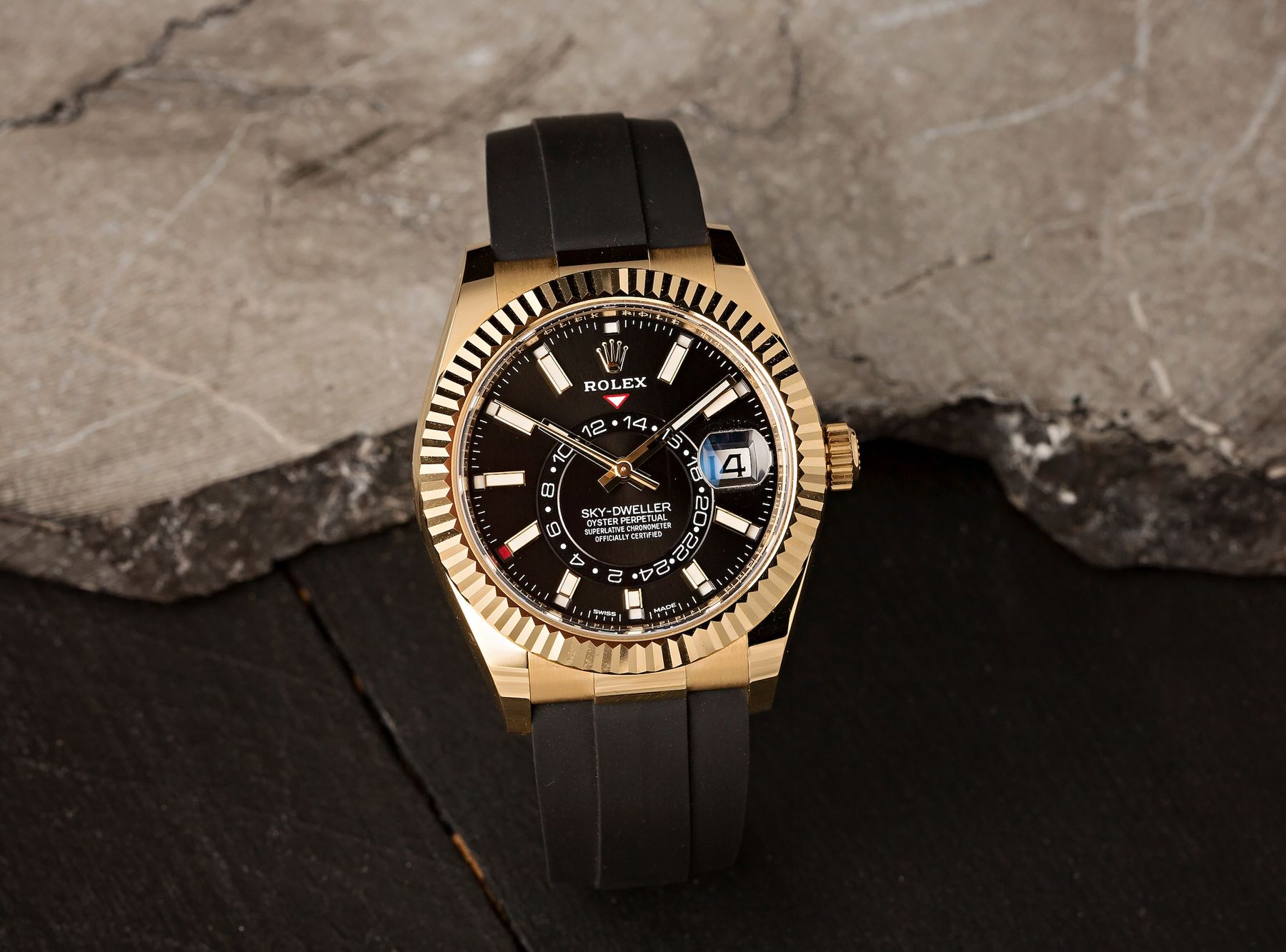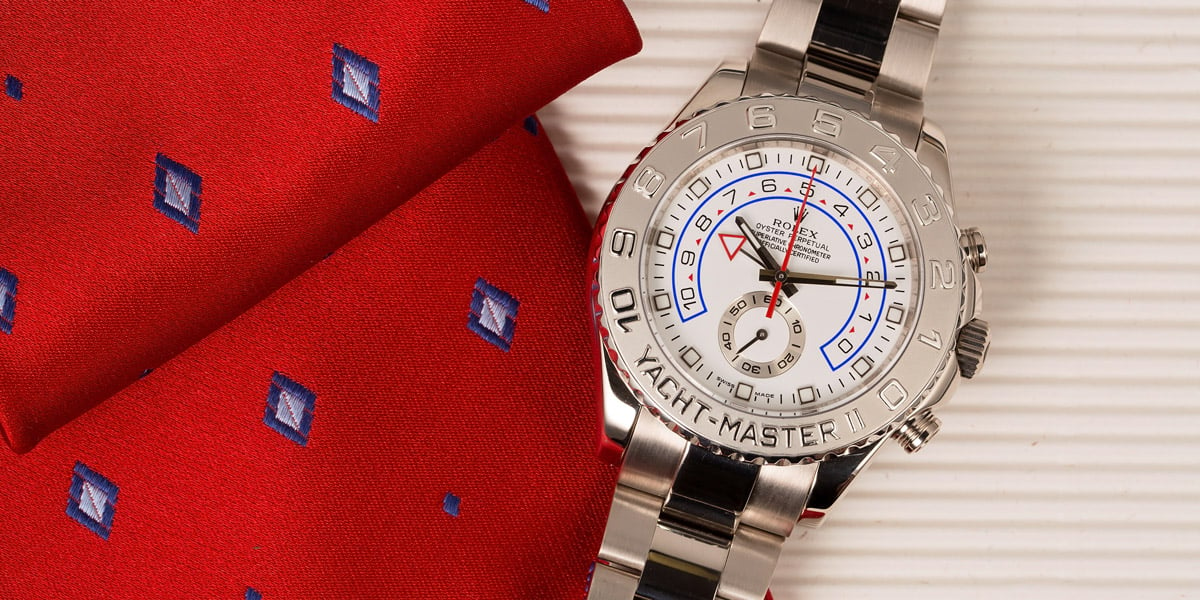First introduced in 2015 on the Everose gold Yacht-Master 40, the Rolex Oysterflex bracelet represents a radical departure from the previous styles of bracelets that can be found on Rolex watches. In the most simple of terms, the Oysterflex bracelet is Rolex’s take on a rubber watch strap. However, to call it a rubber strap would be a bit misleading since it has just as much in common with a metal bracelet, and just like everything else that Rolex produces, the Oysterflex has been over-engineered to an unimaginable extent, taking into consideration every possible detail.
When it comes to adjusting Rolex’s metal bracelets, sizing them is a pretty straightforward task. In addition to any adjustment offered by the clasp itself, links can be added or removed from the bracelet in order to achieve the desired size. However, when it comes to the Rolex Oysterflex bracelet, each side is a single seamless piece of material connected by a solid gold clasp. So, how do you adjust the Rolex Oysterflex bracelet?
Click here for our Ultimate Guide on Rolex Bracelets.
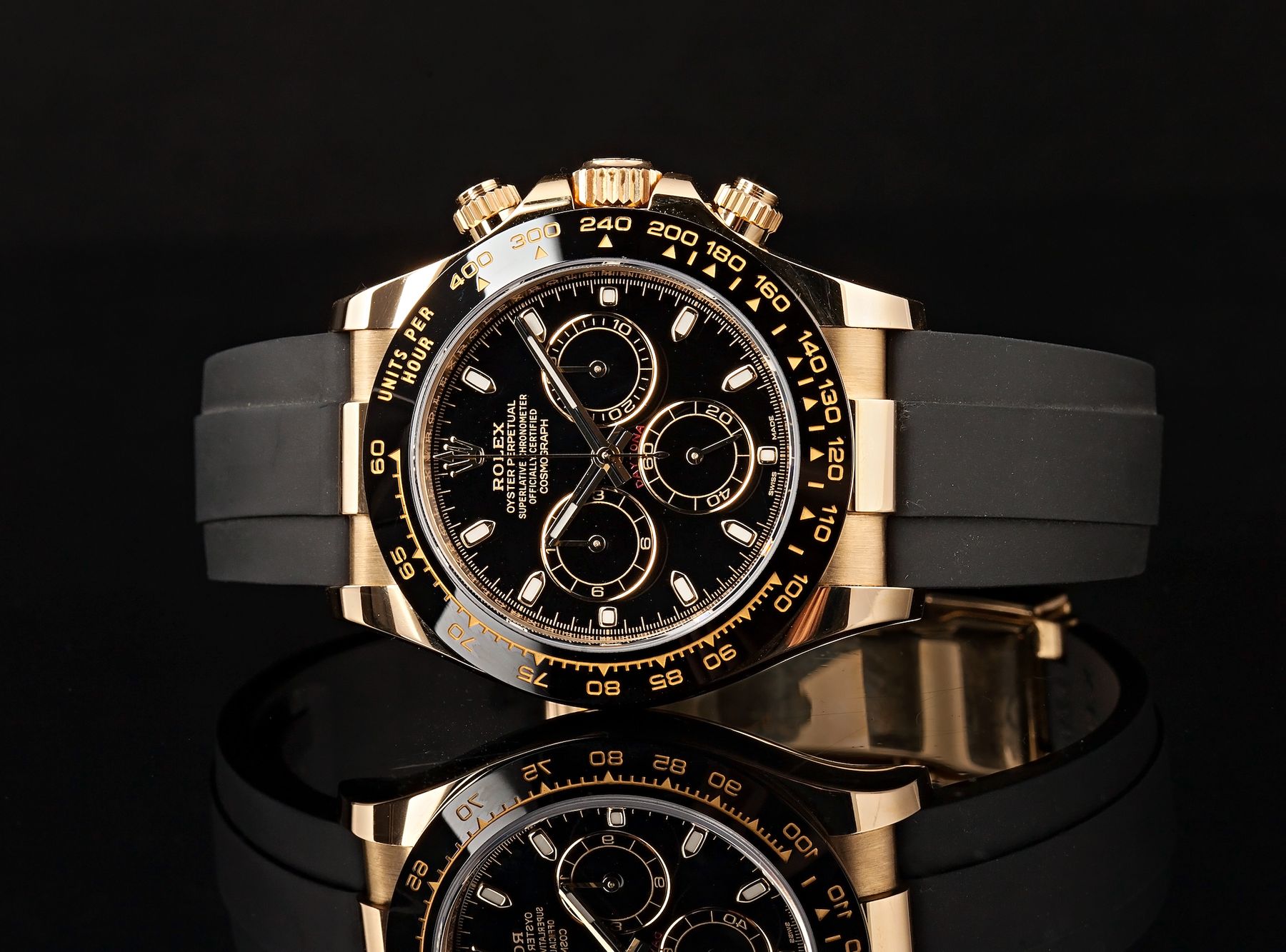
What Is the Rolex Oysterflex Bracelet?
Before we get into the actual process of how to adjust the Rolex Oysterflex bracelet, it might be worth briefly discussing the Oysterflex itself and how it differs from other Rolex bracelets. While the Oysterflex may look like a rubber strap, Rolex actually classifies it as a bracelet since each side features a flexible metal core made from a highly-flexible titanium and nickel-alloy, which is then coated in black elastomer.
Just like one of Rolex’s metal bracelets, the Oysterflex surrounds your entire wrist with mechanically-connected metal components. However, while Rolex’s metal bracelets feature multiple individual links connecting each side of the watch to its clasp, those entire sections are made up of a single flexible metal link on the Oysterflex bracelet. It may look like a standard rubber strap, but the Oysterflex benefits from the strength of a metal bracelet combined with the comfort, flexibility, and lightweight construction of rubber. Consequently, it is considered to be a premium option within Rolex’s catalog and it is exclusively fitted to a handful of models that are all crafted from solid 18k gold.
With that in mind, since each side of the Rolex Oysterflex bracelet is a single piece and you cannot simply add or remove individual links in order to adjust it to a desired circumference, sizing the Oysterflex bracelet follows a slightly different overall process. Additionally, achieving the perfect fit may even require a quick trip to your local authorized Rolex retailer, as there is always a possibility that you will not be able to adjust the bracelet enough without first swapping out one of the sides for one that is a different length.
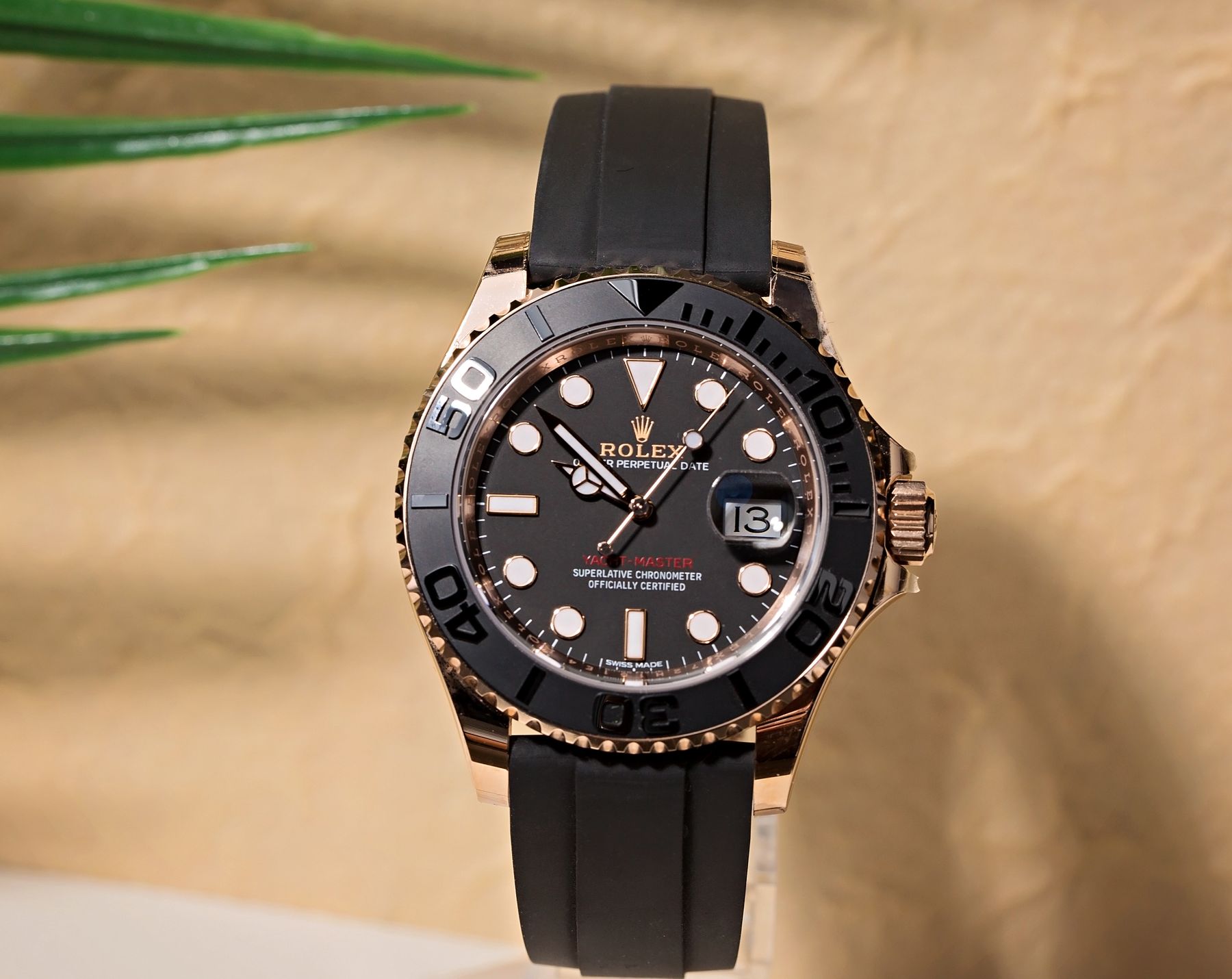
How to Adjust the Rolex Oysterflex Bracelet
There are two main ways of adjusting the size of your Oysterflex bracelet. Small adjustments can be achieved by using its included clasp extension system, while larger alterations are made by swapping out one or both of its sides for equivalent versions of a different length, which are available for purchase directly from Rolex.
Micro-Adjustment with the Clasp
The first thing you should do when adjusting your Rolex Oysterflex bracelet is to check and see if you are able to achieve the desired fit by adjusting your clasp. All of the various Rolex watches that are fitted with Oysterflex bracelets also feature clasps that include some type of extension system. Some of the earliest Oysterflex bracelets received clasps with the Fliplock extension, which enables you to instantly expand or contract the bracelet by approximately 5mm with the fold-out extension link hidden inside the clasp.
However, in the years since the Oysterflex bracelet made its debut, Rolex has expanded its clasp adjustment capabilities. All of the current-production Rolex watches that are fitted with Oysterflex bracelets now also include clasps with Rolex’s patented Glidelock extension system. This allows for instantaneous tool-free adjustment in small increments, which can often be enough to either expand or contract an Oysterflex bracelet to fit your wrist. However, if your Oysterflex still remains too big or too small even after adjusting your clasp, you may need to swap out one or both of the sides for an equivalent version of a different length.
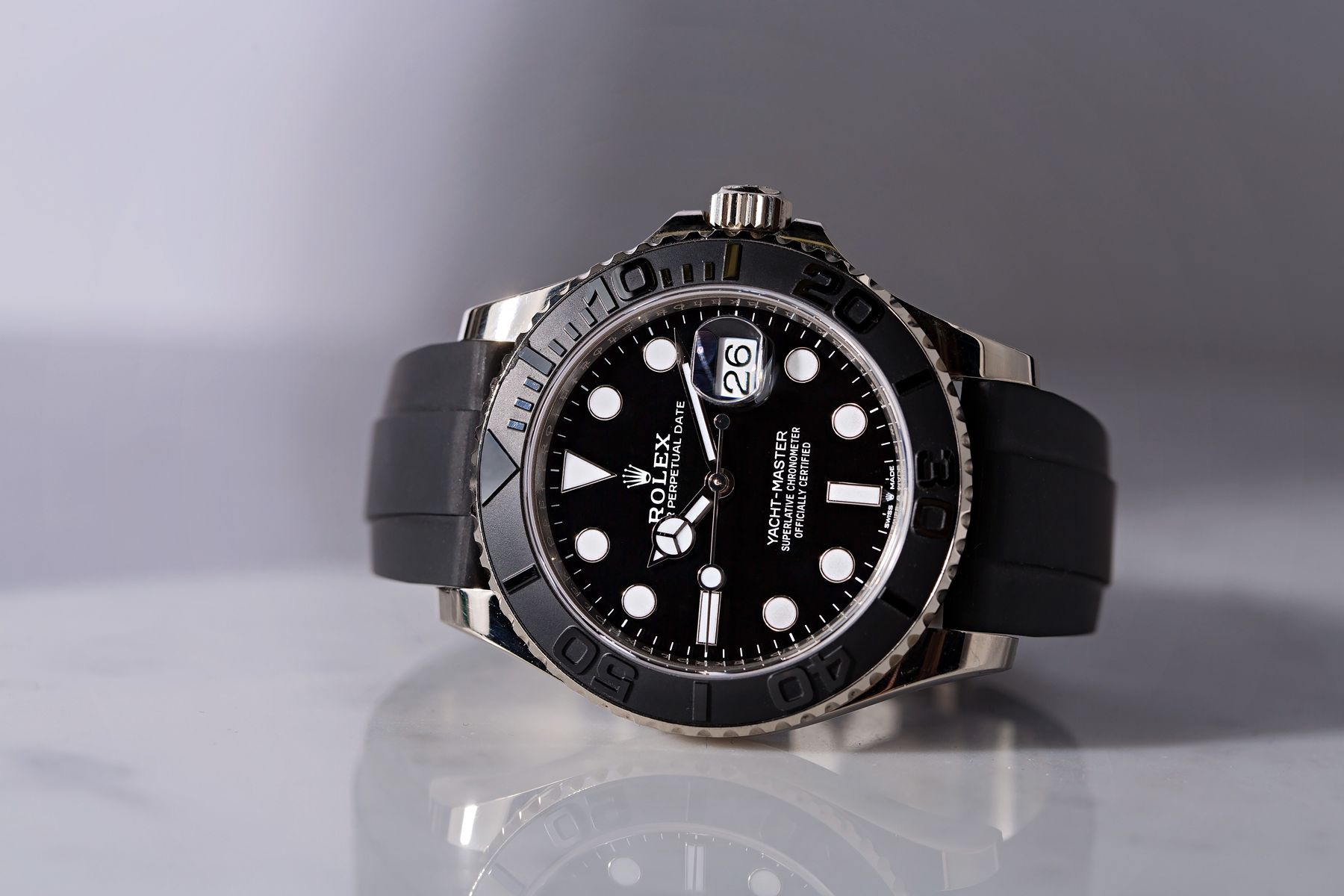
Different Oysterflex Bracelet Sizes
Each side of the Rolex Oysterflex bracelet is produced in different lengths, and all of them have corresponding letter codes attached to them. Different combinations of sizes can be used to achieve different desired circumferences, while simultaneously ensuring that the clasp of your Oysterflex bracelet stays centered on the bottom of your wrist.
The following table outlines how this sizing system works for the various Rolex Daytona watches that are equipped with Oysterflex bracelets.
| Rolex Daytona Oysterflex Bracelet Sizing Chart | ||
| Wrist Size (in millimeters) | Side Size (6 o’clock side) | Side Size (12 o’clock side) |
| 128mm to 138mm | C | D |
| 138mm to 150mm | C | E |
| 150mm to 159mm | D | E |
| 159mm to 170mm | D | F |
| 170mm to 180mm | E | F |
| 180mm to 191mm | E | G |
| 191mm to 202mm | F | G |
| 202mm to 213mm | F | H |
| 213mm to 225mm | G | H |
| 225mm to 234mm | H | H |
It’s important to keep in mind that this recommended sizing system will differ between watches, so the Rolex Sky-Dweller and each of the different Rolex Yacht-Master models will all have their own recommended sizing structures due to the different sizes and dimensions of their cases. Additionally, while these are approximate guidelines for Oysterflex sizes, the shape of someone’s wrist and their individual preferences can also have an impact on the right combination, so if you do ultimately need to swap out one of the sides on your Oysterflex bracelet, it is always recommended to visit your local authorized retailer to confirm exactly which combination of side sizes works best for your wrist.
